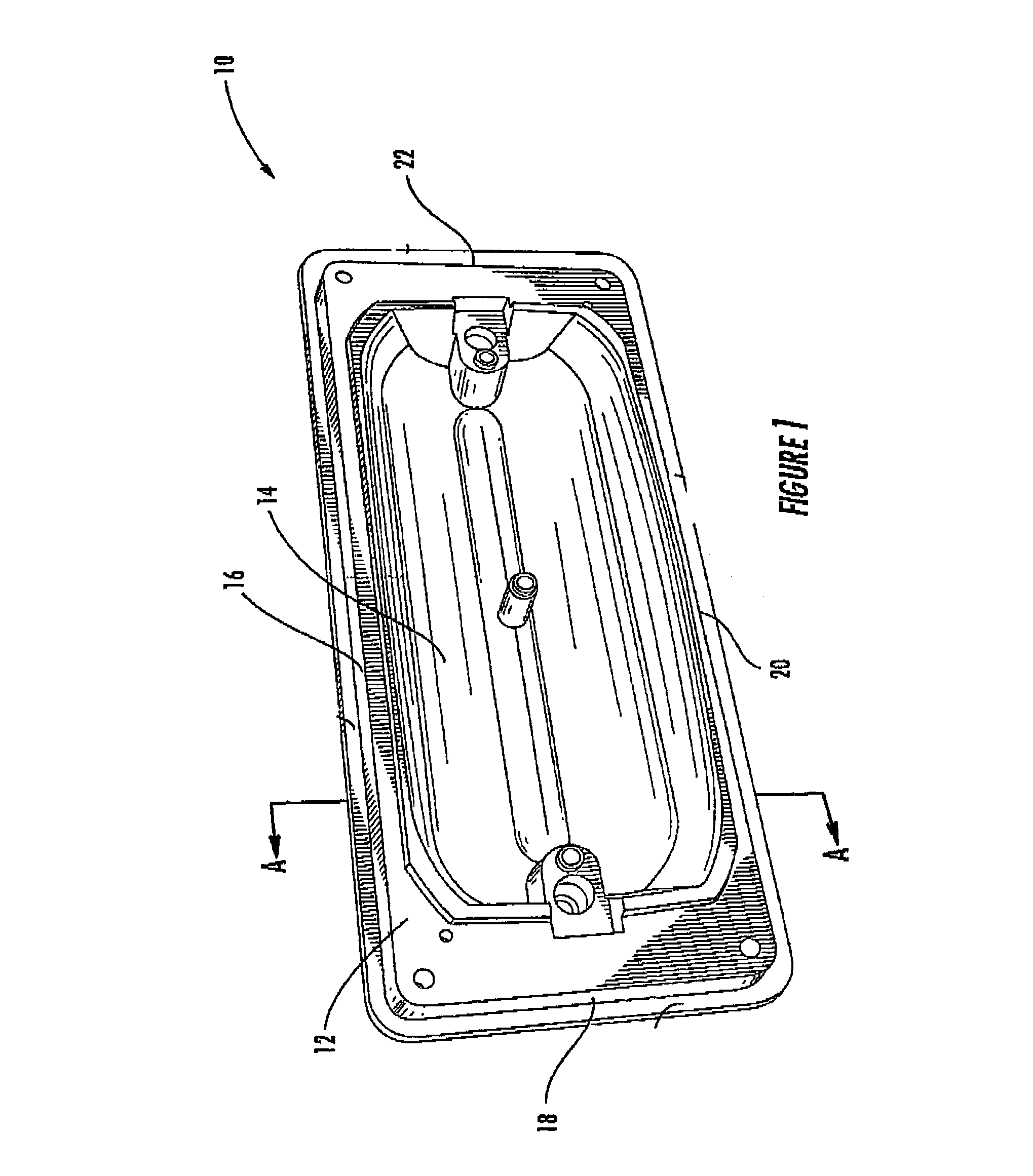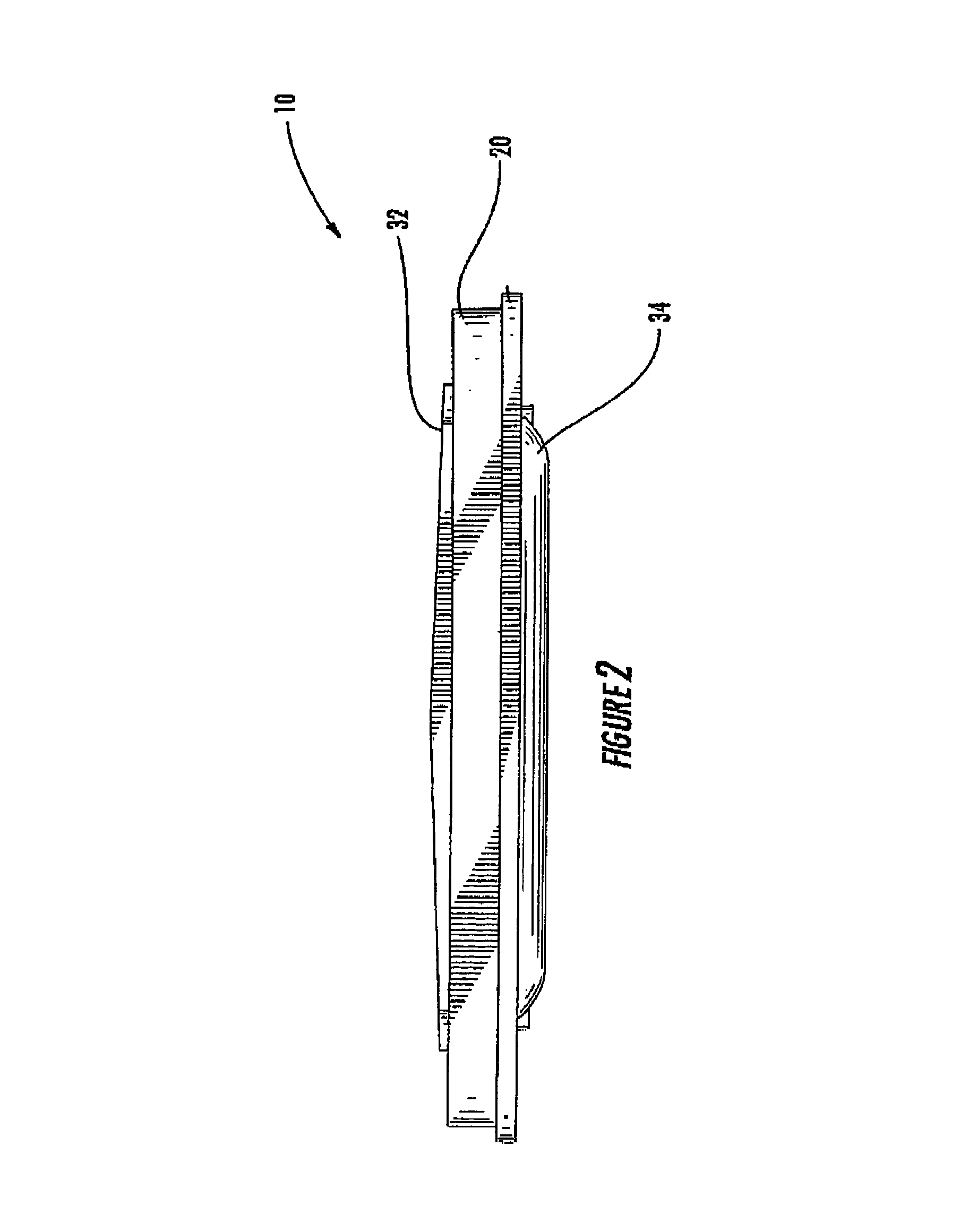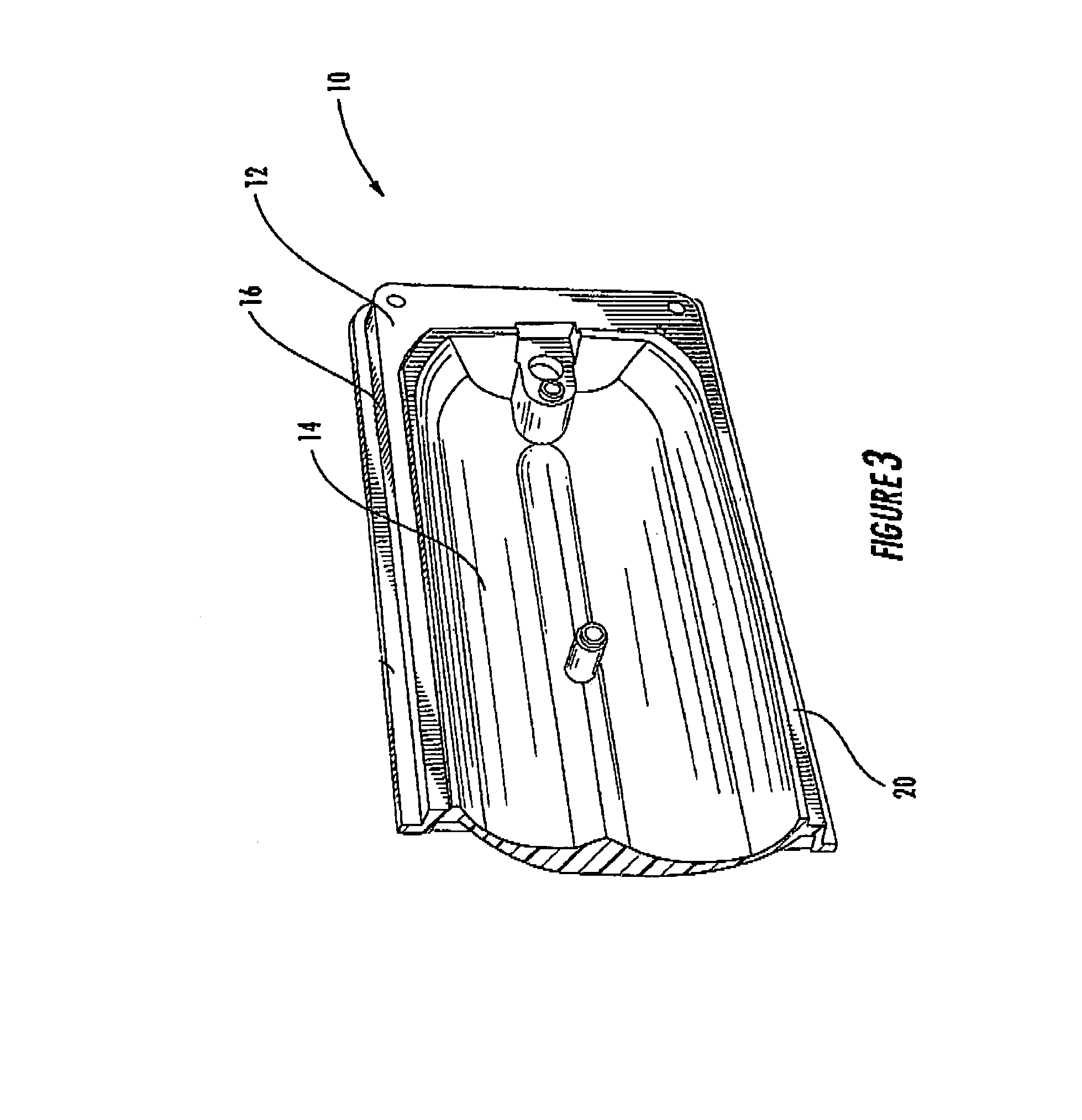Thermally-conductive plastic articles having light reflecting surfaces
a technology of light reflecting surfaces and thermoconductive plastics, which is applied in the direction of synthetic resin layered products, vehicle headlamps, signalling/lighting devices, etc., can solve the problems of difficult to uniformly deposit metallized coatings on such surfaces, time-consuming and expensive polishing process, and limited number of simple shapes made using this cumbersome process
- Summary
- Abstract
- Description
- Claims
- Application Information
AI Technical Summary
Benefits of technology
Problems solved by technology
Method used
Image
Examples
Embodiment Construction
[0016]The present invention relates to thermally-conductive reflector articles and methods for making such articles. The invention also includes the compositions used to make such articles.
[0017]A thermally-conductive polymer composition is used to make the reflector articles of this invention. This composition contains a base polymer matrix and thermally-conductive material. Thermoplastic polymers such as polycarbonates, polyethylene, polypropylene, acrylics, vinyls, fluorocarbons, polyamides, polyphenylene sulfide, and liquid crystal polymers such as thermoplastic aromatic polyesters, can be used to form the matrix. Alternatively, thermosetting polymers such as elastomers, epoxies, polyesters, polyimides, and acrylonitriles can be used as the matrix. Suitable elastomers include, for example, styrene-butadiene copolymer, ethylene-propylene terpolymers, polysiloxanes (silicones), and polyurethanes. Polycarbonates are preferred due to their ability to be easily molded into the reflec...
PUM
| Property | Measurement | Unit |
|---|---|---|
| particle size | aaaaa | aaaaa |
| weight | aaaaa | aaaaa |
| thermally-conductive | aaaaa | aaaaa |
Abstract
Description
Claims
Application Information
 Login to View More
Login to View More - R&D
- Intellectual Property
- Life Sciences
- Materials
- Tech Scout
- Unparalleled Data Quality
- Higher Quality Content
- 60% Fewer Hallucinations
Browse by: Latest US Patents, China's latest patents, Technical Efficacy Thesaurus, Application Domain, Technology Topic, Popular Technical Reports.
© 2025 PatSnap. All rights reserved.Legal|Privacy policy|Modern Slavery Act Transparency Statement|Sitemap|About US| Contact US: help@patsnap.com



